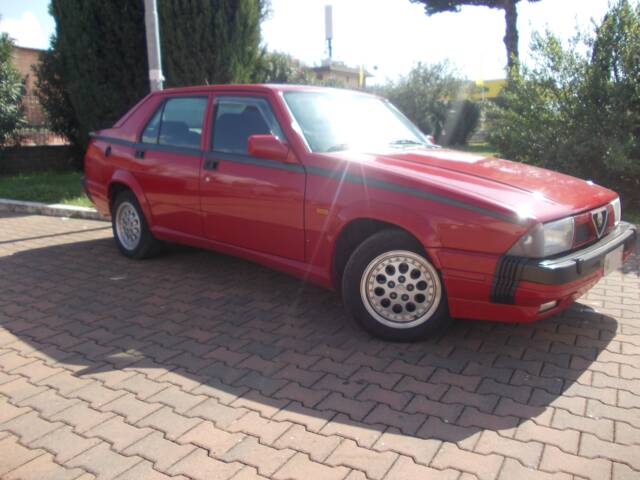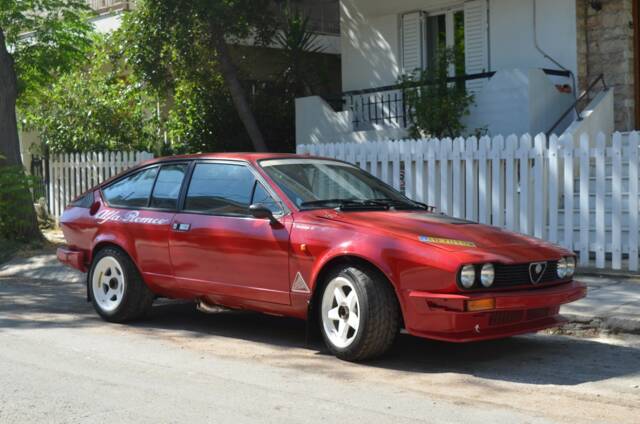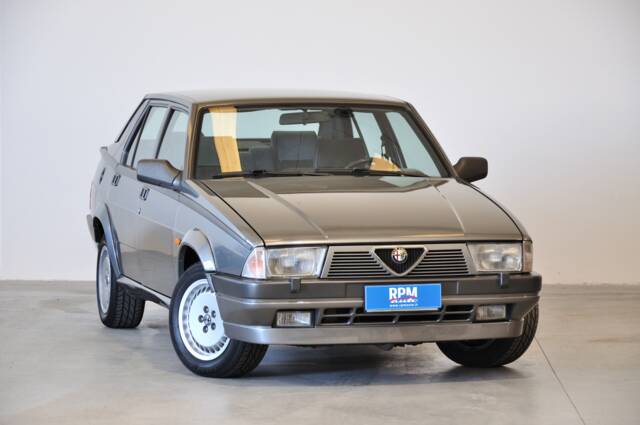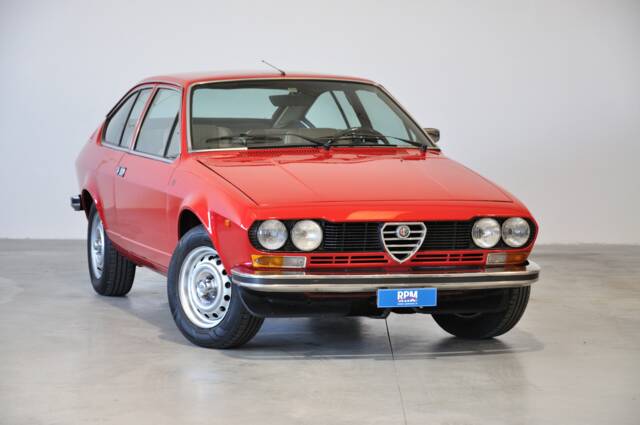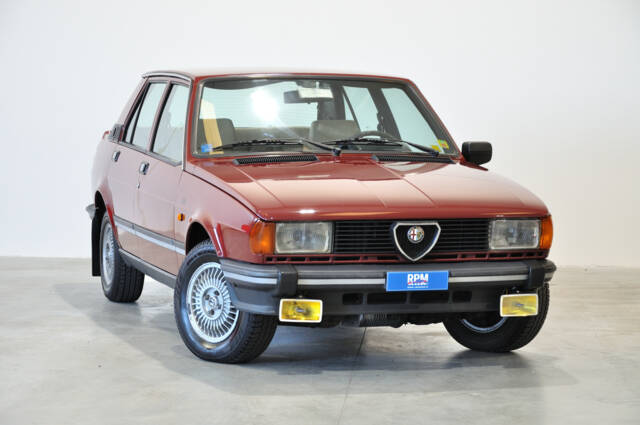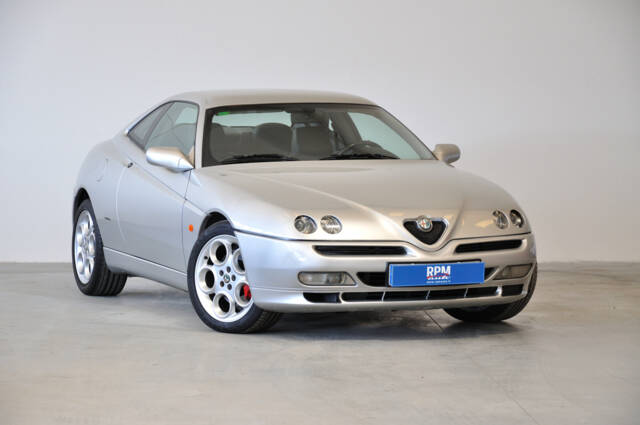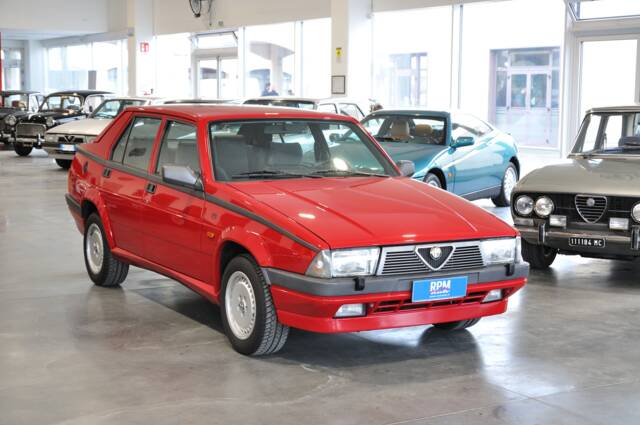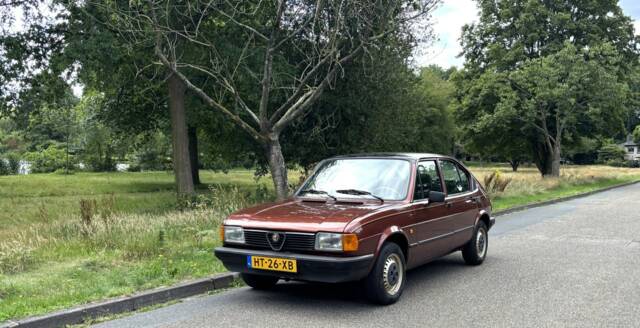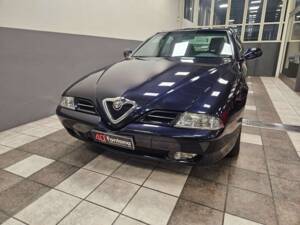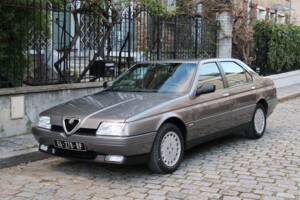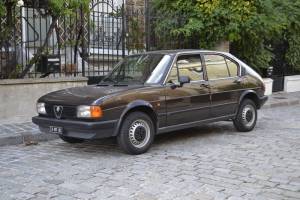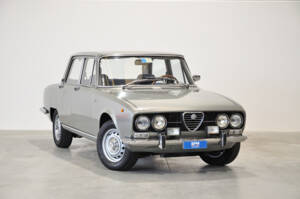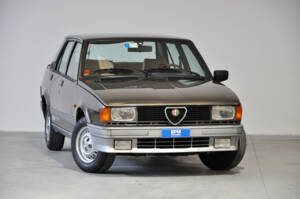History of Alfa Romeo
The history of Alfa Romeo began in 1906, when French engineer Alexandre Darracq established a car factory on Italian soil. By 1910, Lombard investors had transformed the venture into Società Anonima Lombarda Fabbrica Automobili (A.L.F.A). The company’s initial successes came quickly, such as the Alfa 24 HP. Political and economic turbulence during World War I led to the acquisition by Nicola Romeo, giving birth to the name Alfa Romeo in 1915. From that point, Alfa built a reputation not just for cars, but for locomotives, aircraft, and marine engines. Alfa Romeo soon carved out a legacy in motorsport, setting early benchmarks in events like the Targa Florio and Mille Miglia, and clinching Formula 1 world championships in 1950 and 1951.
Model History
Alfa Romeo’s classic lineage features an array of significant model families and engineering schools:
- Giulietta (1954-1965): Offered as Berlina, Sprint, and Spider, with innovative DOHC alloy four-cylinders and light construction.
- Giulia (1962-1978): Saloon and coupé with advanced aerodynamics and chassis, plus legendary Bertone coupés and racing GTA lightweights.
- Spider (from 1966): Styled by Pininfarina, initially with the round-tail ‘Osso di Seppia’ then evolving through multiple series up to 1993.
- Alfetta (from 1972): Featuring the transaxle rear gearbox for optimal weight distribution, available as saloon and coupe (GTV, GTV6).
- Montreal (1970-77): V8-powered with race-derived engineering.
- GTV6 & 75: Introduced V6 “Busso” engines and continued focus on dynamic handling.
Subsequent families introduced new platforms, front-wheel and transaxle technologies, and built on Alfa’s technical identity.
Highlights and Notable Features
Alfa Romeo classic cars set themselves apart with a mix of engineering, sound, style, and historical context:
- Twin-cam aluminium engines (DOHC), hallmark mechanical artistry
- Lightweight alloy construction, race-bred suspensions, and premium brakes
- Designs from Bertone, Pininfarina, Touring Superleggera, Zagato, and others
- Signature transaxle arrangement on models like Alfetta and 75 for sharp handling
- Signature ‘Alfa sound’ with high-revving, soulful exhaust
- Club traditions, concours presence, and regular eligibility for events like Mille Miglia and Targa Florio
- Known original Alfa paint codes and interior trims highly valued by enthusiasts
Technical Data
| Model(s) |
Model Series |
Year(s) of Construction |
Body Variants |
Drive Type |
Power (HP) |
Displacement (ccm) |
Cylinders |
Fuel |
| 24 HP |
|
1910-1913 |
Saloon |
Rear |
42 |
4082 |
4 |
Gasoline |
| 24 HP |
|
1910-1913 |
Convertible |
Rear |
42 |
4082 |
4 |
Gasoline |
| 12 HP |
|
1910-1911 |
Saloon |
Rear |
22 |
2413 |
4 |
Gasoline |
| 12 HP |
|
1910-1911 |
Convertible |
Rear |
22 |
2413 |
4 |
Gasoline |
| 15 HP |
|
1912-1913 |
Saloon |
Rear |
25 |
2413 |
4 |
Gasoline |
| 15 HP |
|
1912-1913 |
Convertible |
Rear |
25 |
2413 |
4 |
Gasoline |
| 40-60 HP |
|
1913-1914 |
Saloon |
Rear |
70 |
6082 |
4 |
Gasoline |
| 40-60 HP |
|
1913-1914 |
Convertible |
Rear |
70 |
6082 |
4 |
Gasoline |
| 15-20 HP |
|
1914-1915 |
Saloon |
Rear |
28 |
2413 |
4 |
Gasoline |
| 15-20 HP |
|
1914-1915 |
Convertible |
Rear |
28 |
2413 |
4 |
Gasoline |
| 20-30 HP |
|
1914-1920 |
Saloon |
Rear |
49 |
4082 |
4 |
Gasoline |
| 20-30 HP |
|
1914-1920 |
Convertible |
Rear |
49 |
4082 |
4 |
Gasoline |
| 20-30 ES Sport |
|
1921 |
Convertible |
Rear |
67 |
4250 |
4 |
Gasoline |
| G1 |
|
1921-1923 |
Saloon |
Rear |
65 |
6567 |
6 |
Gasoline |
| RL Normale |
|
1922-1927 |
Saloon |
Rear |
57 |
2916 |
6 |
Gasoline |
| RL Normale |
|
1922-1927 |
Convertible |
Rear |
57 |
2916 |
6 |
Gasoline |
| RL Sport |
|
1922-1927 |
Saloon |
Rear |
72 |
2994 |
6 |
Gasoline |
| RL Sport |
|
1922-1927 |
Convertible |
Rear |
72 |
2994 |
6 |
Gasoline |
| RL De Ville |
|
1922-1927 |
Saloon (4-doors) |
Rear |
57 |
2916 |
6 |
Gasoline |
| RM Sport |
|
1923-1925 |
Saloon |
Rear |
45 |
1996 |
4 |
Gasoline |
| RM Sport |
|
1923-1925 |
Convertible |
Rear |
45 |
1996 |
4 |
Gasoline |
| P1 |
|
1923-1924 |
Saloon |
Rear |
95 |
1990 |
6 |
Gasoline |
| P1 |
|
1923-1924 |
Convertible |
Rear |
95 |
1990 |
6 |
Gasoline |
| P2 |
|
1924-1930 |
Saloon |
Rear |
140 |
1987 |
8 |
Gasoline |
| P2 |
|
1924-1930 |
Convertible |
Rear |
140 |
1987 |
8 |
Gasoline |
| 6C 1500 Normale |
|
1925-1929 |
Saloon |
Rear |
44 |
1487 |
6 |
Gasoline |
| 6C 1500 Normale |
|
1925-1929 |
Convertible (Roadster) |
Rear |
44 |
1487 |
6 |
Gasoline |
| 6C 1500 Sport |
|
1925-1929 |
Saloon |
Rear |
54 |
1487 |
6 |
Gasoline |
| 6C 1500 Sport |
|
1925-1929 |
Convertible (Roadster) |
Rear |
54 |
1487 |
6 |
Gasoline |
| 6C 1500 Super Sport |
|
1925-1929 |
Saloon |
Rear |
60 |
1487 |
6 |
Gasoline |
| 6C 1500 Super Sport |
|
1925-1929 |
Convertible (Roadster) |
Rear |
60 |
1487 |
6 |
Gasoline |
| 6C 1500 Super Sport Compressore |
|
1925-1929 |
Saloon |
Rear |
76 |
1487 |
6 |
Gasoline |
| 6C 1500 Super Sport Compressore |
|
1925-1929 |
Convertible (Roadster) |
Rear |
76 |
1487 |
6 |
Gasoline |
| 6C 1500 TF |
|
1925-1929 |
Saloon |
Rear |
84 |
1487 |
6 |
Gasoline |
| 6C 1500 TF |
|
1925-1929 |
Convertible (Roadster) |
Rear |
84 |
1487 |
6 |
Gasoline |
| RL Super Sport |
|
1926-1927 |
Saloon |
Rear |
90 |
2994 |
6 |
Gasoline |
| RL Super Sport |
|
1926-1927 |
Convertible |
Rear |
90 |
2994 |
6 |
Gasoline |
| 6C 1750 Turismo |
|
1929-1933 |
Saloon |
Rear |
46 |
1752 |
6 |
Gasoline |
| 6C 1750 Turismo |
|
1929-1933 |
Convertible (Roadster) |
Rear |
46 |
1752 |
6 |
Gasoline |
| 6C 1750 Sport / Gran Turismo |
|
1929-1933 |
Convertible (Roadster) |
Rear |
55 |
1752 |
6 |
Gasoline |
| 6C 1750 Super Sport / Gran Sport |
|
1929-1933 |
Saloon |
Rear |
64 |
1752 |
6 |
Gasoline |
| 6C 1750 Super Sport / Gran Sport |
|
1929-1933 |
Convertible (Roadster) |
Rear |
64 |
1752 |
6 |
Gasoline |
| 6C 1750 Super Sport Compressore |
|
1929-1933 |
Saloon |
Rear |
85 |
1752 |
6 |
Gasoline |
| 6C 1750 Super Sport Compressore |
|
1929-1933 |
Convertible;Convertible (Roadster) |
Rear |
85 |
1752 |
6 |
Gasoline |
| 6C 1750 Gran Turismo Compressore |
|
1929-1933 |
Saloon |
Rear |
80 |
1752 |
6 |
Gasoline |
| 6C 1750 Gran Turismo Compressore |
|
1929-1933 |
Convertible (Roadster) |
Rear |
80 |
1752 |
6 |
Gasoline |
| 6C 1750 Super Sport / Gran Sport / TF |
|
1929-1933 |
Saloon |
Rear |
85 |
1752 |
6 |
Gasoline |
| 6C 1750 Super Sport / Gran Sport / TF |
|
1929-1933 |
Convertible (Roadster) |
Rear |
85 |
1752 |
6 |
Gasoline |
| 6C 1750 Gran Sport |
|
1929-1933 |
Convertible |
Rear |
85 |
1752 |
6 |
Gasoline |
| 6C 1750 Gran Turismo Touring |
|
1929-1933 |
Saloon |
Rear |
80 |
1752 |
6 |
Gasoline |
| 6C 1750 Bidée |
|
1930 |
Convertible (Roadster) |
Rear |
46 |
1752 |
6 |
Gasoline |
| 8C 2300 |
|
1931-1934 |
Coupe |
Rear |
142 |
2336 |
8 |
Gasoline |
| 8C 2300 |
|
1931-1934 |
Convertible;Convertible (Tourer) |
Rear |
142 |
2336 |
8 |
Gasoline |
| 8C 2300 Monza |
|
1931-1934 |
Convertible (Tourer) |
Rear |
178 |
2336 |
8 |
Gasoline |
| P3 |
|
1932-1935 |
Saloon |
Rear |
215 |
2700 |
8 |
Gasoline |
| P3 |
|
1932-1935 |
Convertible |
Rear |
215 |
2700 |
8 |
Gasoline |
| 6C 1900 GT |
|
1933 |
Saloon |
Rear |
68 |
1917 |
6 |
Gasoline |
| 6C 1900 GT |
|
1933 |
Convertible (Roadster) |
Rear |
68 |
1917 |
6 |
Gasoline |
| 6C 2300 B Lungo |
|
1934-1937 |
Saloon |
Rear |
76 |
2309 |
6 |
Gasoline |
| 6C 2300 B Lungo |
|
1934-1937 |
Convertible |
Rear |
76 |
2309 |
6 |
Gasoline |
| 6C 2300 Turismo |
|
1934-1937 |
Saloon |
Rear |
68 |
2309 |
6 |
Gasoline |
| 6C 2300 Turismo |
|
1934-1937 |
Convertible (Roadster) |
Rear |
68 |
2309 |
6 |
Gasoline |
| 6C 2300 Gran Turismo |
|
1934-1937 |
Saloon |
Rear |
76 |
2309 |
6 |
Gasoline |
| 6C 2300 Gran Turismo |
|
1934-1937 |
Convertible (Roadster) |
Rear |
76 |
2309 |
6 |
Gasoline |
| 6C 2300 Pescara |
|
1934-1937 |
Saloon |
Rear |
95 |
2309 |
6 |
Gasoline |
| 6C 2300 Pescara |
|
1934-1937 |
Convertible (Roadster) |
Rear |
95 |
2309 |
6 |
Gasoline |
| 6C 2300 B Pescara |
|
1934-1937 |
Saloon |
Rear |
95 |
2309 |
6 |
Gasoline |
| 6C 2300 B Pescara |
|
1934-1937 |
Convertible (Roadster) |
Rear |
95 |
2309 |
6 |
Gasoline |
| 6C 2300 B Corto |
|
1934-1937 |
Saloon |
Rear |
76 |
2309 |
6 |
Gasoline |
| 6C 2300 B Corto |
|
1934-1937 |
Convertible (Roadster) |
Rear |
76 |
2309 |
6 |
Gasoline |
| 6C 2300 B Mille Miglia |
|
1934-1937 |
Convertible (Roadster) |
Rear |
96 |
2309 |
6 |
Gasoline |
| 6C 2300 B GT Corto |
|
1935-1937 |
Saloon (4-doors) |
Rear |
95 |
2309 |
6 |
Gasoline |
| 8C 2900 |
|
1935-1939 |
Convertible (Tourer) |
Rear |
180 |
2900 |
8 |
Gasoline |
| 6C 2300 B MM Touring |
|
1936-1938 |
Saloon |
Rear |
105 |
2309 |
6 |
Gasoline |
| 6C 2300 Pescara |
|
1937 |
Coupe |
Rear |
95 |
2309 |
6 |
Gasoline |
| 6C 2500 |
|
1938-1952 |
Saloon |
Rear |
90 |
2443 |
6 |
Gasoline |
| 6C 2500 |
|
1938-1952 |
Convertible (Roadster) |
Rear |
90-95 |
2443 |
6 |
Gasoline |
| 6C 2500 Sport |
|
1938-1952 |
Saloon |
Rear |
95 |
2443 |
6 |
Gasoline |
| 6C 2500 Sport |
|
1938-1952 |
Convertible (Roadster) |
Rear |
90-95 |
2443 |
6 |
Gasoline |
| 6C 2500 Coloniale |
|
1938-1952 |
Saloon |
Rear |
90 |
2443 |
6 |
Gasoline |
| 6C 2500 Coloniale |
|
1938-1952 |
Convertible (Roadster) |
Rear |
90 |
2443 |
6 |
Gasoline |
| 6C 2500 Turismo |
|
1938-1952 |
Saloon |
Rear |
87 |
2443 |
6 |
Gasoline |
| 6C 2500 Turismo |
|
1938-1952 |
Convertible (Roadster) |
Rear |
87 |
2443 |
6 |
Gasoline |
| 6C 2500 Super Sport |
|
1938-1952 |
Saloon |
Rear |
110 |
2443 |
6 |
Gasoline |
| 6C 2500 Super Sport |
|
1938-1952 |
Convertible (Roadster) |
Rear |
110 |
2443 |
6 |
Gasoline |
| 6C 2500 Super Sport Corsa |
|
1938-1952 |
Saloon |
Rear |
120 |
2443 |
6 |
Gasoline |
| 6C 2500 Super Sport Corsa |
|
1938-1952 |
Convertible (Roadster) |
Rear |
120 |
2443 |
6 |
Gasoline |
| 6C 2500 Sport Pininfarina |
|
1938-1952 |
Saloon |
Rear |
95 |
2443 |
6 |
Gasoline |
| 6C 2500 Sport Pininfarina |
|
1938-1952 |
Convertible (Roadster) |
Rear |
95 |
2443 |
6 |
Gasoline |
| 6C 2500 Freccia d`Oro |
|
1938-1952 |
Saloon |
Rear |
90 |
2443 |
6 |
Gasoline |
| 6C 2500 Villa d`Este |
|
1938-1952 |
Saloon (2-doors) |
Rear |
110 |
2443 |
6 |
Gasoline |
| 6C 2500 Villa d`Este |
|
1938-1952 |
Convertible (Roadster) |
Rear |
110 |
2443 |
6 |
Gasoline |
| 6C 2500 Gran Turismo |
|
1938-1952 |
Saloon |
Rear |
110 |
2443 |
6 |
Gasoline |
| 6C 2500 Gran Turismo |
|
1938-1952 |
Convertible (Roadster) |
Rear |
110 |
2443 |
6 |
Gasoline |
| 6C 2500 Competizione |
|
1938-1952 |
Convertible (Roadster) |
Rear |
145 |
2443 |
6 |
Gasoline |
| 6C 2500 Freccia d`Oro Sport |
|
1938-1952 |
Coupe |
Rear |
90 |
2443 |
6 |
Gasoline |
| 412 Spider Vignale |
|
1939 |
Convertible (Roadster) |
Front |
230 |
4500 |
12 |
Gasoline |
| 6C 2500 Sport |
|
1947-1952 |
Coupe |
Rear |
95 |
2443 |
6 |
|
| 6C 2500 SS |
|
1947-1949 |
Convertible (Roadster) |
Rear |
105 |
2443 |
6 |
Gasoline |
| 6C 2500 Super Sport |
|
1947-1952 |
Coupe |
Rear |
110 |
2443 |
6 |
Gasoline |
| 6C 2500 Sport Stabilimenti Farina |
|
1947 |
Convertible |
|
90 |
2443 |
6 |
|
| 6C 2500 Super Sport Villa d`Este |
|
1947-1952 |
Coupe |
Rear |
110 |
2443 |
6 |
Gasoline |
| 6C 2500 Ghia |
|
1947 |
Convertible (Roadster) |
Rear |
90 |
2443 |
6 |
Gasoline |
| 6C 2500 S Touring |
|
1947 |
Coupe |
Rear |
95 |
2443 |
6 |
Gasoline |
| 450 / 455 |
|
1947-1959 |
Utility Vehicle (Plank bed) |
|
90 |
6300 |
4 |
Diesel |
| 6C 2500 SS Barchetta Competizione |
|
1949 |
Convertible (Roadster) |
|
135 |
2443 |
6 |
Gasoline |
| 6C 2500 Super Sport Villa d`Este |
|
1949 |
Convertible (Roadster) |
Rear |
110 |
2443 |
6 |
Gasoline |
| 1900 Berlina |
Typ 1900 |
1950-1954 |
Coupe |
Rear |
80 |
1884 |
4 |
Gasoline |
| 1900 Berlina |
Typ 1900 |
1950-1954 |
Saloon |
Rear |
80 |
1884 |
4 |
|
| 1900 Berlina |
Typ 1900 |
1950-1954 |
Convertible |
Rear |
80 |
1884 |
4 |
Gasoline |
| 1900 C Sprint |
Typ 1900 |
1951-1955 |
Coupe |
Rear |
100 |
1884 |
4 |
Gasoline |
| 1900 C Sprint |
Typ 1900 |
1951-1954 |
Saloon |
Rear |
100 |
1884 |
4 |
Gasoline |
| 1900 C Sprint |
Typ 1900 |
1951-1954 |
Convertible |
Rear |
100 |
1884 |
4 |
Gasoline |
| Alfetta 159 |
|
1951 |
Convertible |
Rear |
420 |
1479 |
8 |
Gasoline |
| 1900 SSZ (Zagato) |
|
1952-1955 |
Coupe |
|
115 |
1975 |
4 |
|
| Disco Volante |
|
1952-1953 |
Convertible (Roadster) |
Rear |
160 |
1997 |
4 |
Gasoline |
| 1900 M |
AR 51 |
1952-1954 |
4x4 (Military vehicle) |
4WD |
65 |
1900 |
4 |
Gasoline |
| 1900 M |
AR 52 |
1952-1954 |
4x4 |
4WD |
65 |
1900 |
4 |
Gasoline |
| 1900 TI Berlina |
Typ 1900 |
1953-1954 |
Coupe |
Rear |
100 |
1884 |
4 |
Gasoline |
| 1900 TI Berlina |
Typ 1900 |
1953-1954 |
Saloon |
Rear |
100 |
1884 |
4 |
|
| 1900 TI Berlina |
Typ 1900 |
1953-1954 |
Convertible |
Rear |
100 |
1884 |
4 |
Gasoline |
| 1900 ATL |
Typ 1900 |
1953-1956 |
Coupe |
Rear |
80-90 |
1975 |
4 |
Gasoline |
| 1900 Speciale |
Typ 1900 |
1953 |
Coupe |
Rear |
80 |
1975 |
4 |
Gasoline |
| 1900 Barchetta |
Typ 1900 |
1953 |
Convertible (Roadster) |
Rear |
80 |
1975 |
4 |
Gasoline |
| 1900 C Super Sprint Touring |
Typ 1900 |
1953-1956 |
Coupe |
Rear |
115 |
1975 |
4 |
Gasoline |
| 6C 3000 CM |
|
1953 |
Convertible (Roadster) |
Rear |
275 |
3495 |
6 |
Gasoline |
| 1900 Super Berlina |
Typ 1900 |
1954-1959 |
Coupe |
Rear |
90 |
1975 |
4 |
Gasoline |
| 1900 Super Berlina |
Typ 1900 |
1954-1959 |
Saloon (4-doors) |
Rear |
90 |
1975 |
4 |
Gasoline |
| 1900 Super Berlina |
Typ 1900 |
1954-1959 |
Convertible |
Rear |
90 |
1975 |
4 |
Gasoline |
| 1900 TI Super Berlina |
Typ 1900 |
1954-1957 |
Coupe |
Rear |
115 |
1975 |
4 |
Gasoline |
| 1900 TI Super Berlina |
Typ 1900 |
1954-1957 |
Saloon |
Rear |
115 |
1975 |
4 |
|
| 1900 TI Super Berlina |
Typ 1900 |
1954-1957 |
Convertible |
Rear |
115 |
1975 |
4 |
Gasoline |
| 1900 C Super Sprint Berlina |
Typ 1900 |
1954-1956 |
Coupe |
Rear |
115 |
1975 |
4 |
Gasoline |
| 1900 C Super Sprint Ghia Speciale |
Typ 1900 |
1954 |
Coupe |
Rear |
115 |
1975 |
4 |
Gasoline |
| Giulietta Sprint |
|
1954-1963 |
Coupe |
Rear |
65-80 |
1290 |
4 |
Gasoline |
| Romeo |
T10 |
1954-1966 |
Bus (Camper);Bus |
Rear |
30-36 |
1200 - 1300 |
4 |
Diesel;Gasoline |
| 1900 C Super Sprint |
Typ 1900 |
1955-1958 |
Coupe |
Rear |
115 |
1975 |
4 |
|
| 1900 C Super Sprint Berlina |
Typ 1900 |
1955-1958 |
Saloon |
Rear |
115 |
1975 |
4 |
Gasoline |
| 1900 C Super Sprint Berlina |
Typ 1900 |
1955-1957 |
Convertible |
Rear |
115 |
1975 |
4 |
Gasoline |
| Giulietta Spider |
|
1955-1963 |
Convertible |
Rear |
65-80 |
1290 |
4 |
|
| Giulietta |
|
1955-1963 |
Saloon |
Rear |
50-62 |
1290 |
4 |
|
| 1900 Super Primavera Boano |
Typ 1900 |
1956 |
Coupe |
Rear |
90 |
1975 |
4 |
Gasoline |
| 1900 CSS Ghia-Aigle |
Typ 1900 |
1956-1959 |
Coupe |
Rear |
115 |
1880 |
4 |
Gasoline |
| Giulietta Sprint Veloce |
|
1956-1962 |
Coupe |
Rear |
90 |
1290 |
4 |
|
| Giulietta Spider Veloce |
|
1956-1962 |
Convertible |
Rear |
90 |
1290 |
4 |
Gasoline |
| Giulietta Spider Veloce |
Tipo 750 |
1956-1959 |
Convertible |
Rear |
90 |
1290 |
4 |
Gasoline |
| Dauphine Gordini |
|
1956-1958 |
Saloon |
Rear |
33-36 |
845 |
4 |
Gasoline |
| 1900 C Super Sprint Touring Superleggera |
Typ 1900 |
1957 |
Convertible |
Rear |
115 |
1975 |
4 |
Gasoline |
| Giulietta TI |
|
1957-1964 |
Saloon |
Rear |
65-74 |
1290 |
4 |
|
| Giulietta SS |
Tipo 750 SS |
1957-1958 |
Coupe |
Rear |
100 |
1290 |
4 |
Gasoline |
| 2000 Spider |
|
1957-1961 |
Convertible |
Rear |
115 |
1975 |
4 |
Gasoline |
| 2000 Berlina |
|
1957-1977 |
Saloon;Saloon (4-doors) |
Rear |
105-132 |
1962 - 1975 |
4 |
Gasoline |
| 1900 C Super Sprint |
Typ 1900 |
1958 |
Convertible |
Rear |
115 |
1975 |
4 |
Gasoline |
| Giulietta SS |
Tipo 101 |
1958-1963 |
Coupe |
Rear |
100 |
1290 |
4 |
Gasoline |
| 1900 ATL |
Typ 1900 |
1959 |
Convertible (Roadster) |
Rear |
126 |
1975 |
4 |
Gasoline |
| Giulietta SZ |
|
1959-1962 |
Coupe |
Rear |
100 |
1290 |
4 |
Gasoline |
| 2000 Sprint |
|
1959-1962 |
Coupe |
Rear |
115 |
1975 |
4 |
|
| Dauphine R 1090 |
R1090 |
1959-1961 |
Saloon |
Rear |
49 |
845 |
4 |
Gasoline |
| Dauphine Rallye 1093 |
R1093 |
1959-1963 |
Saloon |
Rear |
49 |
850 |
4 |
Gasoline |
| 1150 Conrero |
|
1960 |
Convertible (Roadster) |
Front |
125 |
1148 |
5 |
|
| 2600 Berlina |
|
1961-1969 |
Saloon (4-doors);Saloon |
Rear |
130 |
2584 |
6 |
Gasoline |
| 2600 Sprint |
|
1961-1966 |
Coupe |
Rear |
145 |
2584 |
6 |
Gasoline |
| 2600 Spider |
Typ 106.01 |
1961-1969 |
Convertible |
Rear |
145 |
2584 |
6 |
Gasoline |
| Giulia 1600 TI |
|
1962-1967 |
Saloon (4-doors) |
Rear |
92 |
1570 |
4 |
Gasoline |
| Giulia 1600 Sprint |
|
1962-1963 |
Coupe |
Rear |
92 |
1570 |
4 |
|
| Giulia 1600 Spider |
|
1962-1964 |
Convertible |
Rear |
92 |
1570 |
4 |
Gasoline |
| Giulia 1300 Giardinetta |
|
1962-1973 |
Estate |
Rear |
82 |
1290 |
4 |
|
| Giulia Barchetta Gilco |
|
1962 |
Convertible |
Rear |
92 |
1570 |
4 |
Gasoline |
| Giulia 1600 Giardinetta |
|
1962-1973 |
Estate |
Rear |
89 |
1570 |
4 |
Gasoline |
| Giulietta Sprint 1300 |
|
1963-1965 |
Coupe |
Rear |
80 |
1290 |
4 |
|
| Giulietta Sprint 1600 |
|
1963-1965 |
Coupe |
|
92 |
1570 |
4 |
Gasoline |
| Giulia 1600 Sprint GT |
|
1963-1966 |
Coupe |
Rear |
106 |
1570 |
4 |
|
| Giulia TZ 1 |
|
1963-1965 |
Coupe |
Rear |
112 |
1570 |
4 |
Gasoline |
| Giulia 1600 TI Super |
|
1963-1964 |
Saloon (4-doors) |
Rear |
112 |
1570 |
4 |
Gasoline |
| Giulia Sprint Speciale |
Tipo 101.21 |
1963-1966 |
Coupe |
Rear |
112 |
1570 |
4 |
Gasoline |
| Giulia 1300 |
|
1964-1970 |
Saloon |
Rear |
78 |
1290 |
4 |
|
| Giulia 1600 Spider Veloce |
|
1964-1965 |
Convertible |
Rear |
112 |
1570 |
4 |
|
| Giulia 1600 GTC |
|
1964-1966 |
Convertible |
Rear |
106 |
1570 |
4 |
|
| TZ 2 |
|
1964-1967 |
Coupe |
Rear |
165 |
1600 |
4 |
Gasoline |
| Giulia 1300 TI |
|
1965-1972 |
Saloon (4-doors) |
Rear |
82 |
1290 |
4 |
Gasoline |
| Giulia Nuova Super 1600 |
|
1965-1979 |
Saloon (4-doors);Saloon |
Rear |
89-102 |
1570 |
4 |
Gasoline |
| Giulia 1600 Sprint GT Veloce |
|
1965-1968 |
Coupe |
Rear |
109 |
1570 |
4 |
Gasoline |
| Giulia Sprint GTA |
|
1965-1969 |
Coupe |
Rear |
115-150 |
1570 - 1962 |
4 |
Gasoline |
| Giulia 1600 Super Giardinetta |
|
1965-1974 |
Estate (Kombi) |
Rear |
89 |
1570 |
4 |
Gasoline |
| 2600 De Luxe |
|
1965 |
Saloon |
Rear |
130 |
2584 |
6 |
|
| 2600 Sprint Zagato |
|
1965-1967 |
Coupe |
Rear |
145 |
2584 |
6 |
Gasoline |
| 2600 Zagato |
Typ 2600 |
1965-1967 |
Saloon |
Rear |
145 |
2584 |
6 |
Gasoline |
| 2600 OSI |
Typ 2600 |
1965-1967 |
Saloon |
Rear |
130 |
2584 |
6 |
Gasoline |
| Gran Sport Quattroruote |
|
1965-1967 |
Convertible (Roadster) |
Rear |
92 |
1570 |
4 |
Gasoline |
| Giulia GT 1300 Junior |
|
1966-1975 |
Coupe |
Rear |
89 |
1290 |
4 |
Gasoline |
| 1600 Spider Duetto |
Tipo 105 - Serie 1a |
1966-1968 |
Convertible (Roadster) |
Rear |
109 |
1570 |
4 |
Gasoline |
| 1300 Spider Junior |
Tipo 105 - Serie 1a |
1966-1969 |
Convertible |
Rear |
89 |
1290 |
4 |
Gasoline |
| Romeo II |
F 12 / A12 |
1966-1983 |
Bus |
Rear |
50-53 |
1300 - 1800 |
4 |
Diesel;Gasoline |
| GTA SA |
|
1967-1968 |
Coupe |
Rear |
220 |
1570 |
4 |
Gasoline |
| Giulia Giorgetti |
|
1967 |
Estate |
Rear |
110 |
1750 |
4 |
Gasoline |
| Giulia Giardinetta |
|
1967-1973 |
Estate |
Rear |
131 |
1948 |
4 |
Gasoline |
| 1750 Spider Veloce |
Tipo 105 - Serie 1a |
1967-1969 |
Convertible |
Rear |
118 |
1779 |
4 |
|
| Romeo II |
F 11 / A11 |
1967-1971 |
Bus |
Rear |
50-53 |
1300 - 1800 |
4 |
Diesel;Gasoline |
| Tipo 33/2 |
|
1967-1968 |
Coupe |
Rear |
315 |
1995 |
8 |
Gasoline |
| Tipo 33 Stradale |
|
1967-1969 |
Coupe |
Rear |
230 |
1995 |
8 |
Gasoline |
| 1750 GT Veloce |
Tipo 105 |
1967-1973 |
Coupe |
Rear |
113-137 |
1779 |
4 |
Gasoline |
| A12/F12 |
|
1967-1983 |
Utility Vehicle (Plank bed) |
|
50 |
1290 |
4 |
Gasoline |
| Giulia GTA 1300 Junior |
|
1968-1975 |
Coupe |
Rear |
96 |
1290 |
4 |
Gasoline |
| Giulia 1600 Super Biscione |
|
1968-1971 |
Saloon (4-doors) |
|
103 |
1570 |
4 |
Gasoline |
| Giulia 1600 S |
|
1968-1970 |
Saloon (4-doors) |
Rear |
95 |
1570 |
4 |
Gasoline |
| 1750 Berlina |
model 105-model 115 |
1968-1972 |
Saloon (4-doors) |
Rear |
113 |
1779 |
4 |
Gasoline |
| GTA 1300 Junior Autodelta |
Tipo 105 |
1969-1972 |
Coupe |
Rear |
160 |
1290 |
4 |
Gasoline |
| Spider 1300 Junior |
Tipo 105 - Serie 2a |
1969-1974 |
Convertible |
Rear |
89 |
1290 |
4 |
Gasoline |
| 1750 Spider |
Tipo 105 - Serie 2a |
1969-1972 |
Convertible |
Rear |
118 |
1779 |
4 |
Gasoline |
| 1750 Spider Veloce |
Tipo 105 - Serie 2a |
1969-1972 |
Convertible |
Rear |
132 |
1779 |
4 |
Gasoline |
| Junior Zagato GT 1300 |
Typ 105.93 |
1969-1972 |
Coupe |
Rear |
87 |
1290 |
4 |
Gasoline |
| Giulia 1300 Super |
|
1970-1972 |
Saloon (4-doors) |
Rear |
89 |
1290 |
4 |
Gasoline |
| Giulia 1750 GT Am |
|
1970-1971 |
Coupe |
Rear |
195-240 |
1985 |
4 |
Gasoline |
| Montreal |
|
1970-1977 |
Coupe |
Rear |
195 |
2593 |
8 |
Gasoline |
| GTV 2000 |
Tipo 105 |
1971-1974 |
Coupe |
Rear |
150 |
1962 |
4 |
Gasoline |
| 2000 Spider Veloce |
Tipo 115 - Serie 2a |
1971-1983 |
Convertible |
Rear |
127-132 |
1962 |
4 |
Gasoline |
| 2000 GT Veloce |
Tipo 105 |
1971-1976 |
Coupe |
Rear |
128-131 |
1962 |
4 |
Gasoline |
| Giulia Super 1.6 |
|
1972-1974 |
Saloon (4-doors) |
Rear |
102 |
1570 |
4 |
Gasoline |
| Giulia Super 1.3 |
|
1972-1974 |
Saloon (4-doors) |
Rear |
89 |
1290 |
4 |
Gasoline |
| Giulia 1600 GT Junior |
|
1972-1976 |
Coupe |
Rear |
109 |
1570 |
4 |
Gasoline |
| 1600 GT Junior Z |
|
1972-1975 |
Coupe |
Rear |
109 |
1570 |
4 |
|
| 1600 Spider |
Tipo 115 - Serie 2a |
1972-1982 |
Convertible |
Rear |
102-109 |
1570 |
4 |
Gasoline |
| Alfasud |
|
1972-1979 |
Saloon (2-doors);Saloon |
Front |
63 |
1186 - 1286 |
4 |
Gasoline |
| Alfetta 1.8 |
|
1972-1981 |
Saloon |
Rear |
118-122 |
1779 |
4 |
|
| Junior Zagato GT 1600 |
Typ 115.24 |
1972-1975 |
Coupe |
Rear |
109 |
1570 |
4 |
Gasoline |
| Alfasud 1.2 ti |
|
1973-1983 |
Saloon (2-doors);Saloon |
Front |
68 |
1186 |
4 |
Gasoline |
| Giulia Nuova Super 1300 |
|
1974-1977 |
Saloon (4-doors) |
Rear |
89 |
1290 |
4 |
Gasoline |
| Spider 1300 |
Tipo 115 - Serie 2a |
1974-1977 |
Convertible |
Rear |
89 |
1290 |
4 |
Gasoline |
| Spider 1600 Junior |
Tipo 115 - Serie 2a |
1974-1977 |
Convertible |
Front |
109 |
1570 |
4 |
Gasoline |
| Alfetta GT 1.8 |
|
1974-1977 |
Coupe |
Rear |
122 |
1779 |
4 |
Gasoline |
| Alfetta 1.6 |
|
1974-1983 |
Saloon |
Rear |
108 |
1570 |
4 |
|
| Giulia Nuova 1800 Diesel |
|
1975-1977 |
Saloon (4-doors) |
Rear |
52 |
1760 |
4 |
Diesel |
| Alfasud 1.2 Giardinetta |
|
1975-1977 |
Estate |
Front |
63 |
1186 |
4 |
|
| A12 Camper |
|
1975-1983 |
Camper |
|
50 |
1700 |
4 |
Diesel |
| Alfasud Sprint |
|
1976-1982 |
Coupe |
Front |
76-79 |
1286 - 1351 |
4 |
|
| Alfetta GT 1.6 |
|
1976-1980 |
Coupe |
Rear |
108 |
1570 |
4 |
|
| Alfetta GTV 2000 |
|
1976-1978 |
Coupe |
Rear |
121 |
1998 |
4 |
Gasoline |
| Giulietta 1.6 |
Typ 116 |
1977-1986 |
Saloon;Saloon (4-doors) |
Rear |
90-108 |
1556 - 1570 |
4 |
Gasoline |
| Giulietta 1.3 |
Typ 116 |
1977-1982 |
Saloon (4-doors) |
|
95 |
1357 |
4 |
Gasoline |
| Alfetta 2.0 |
|
1977-1985 |
Saloon |
Rear |
122-131 |
1962 |
4 |
|
| Alfasud 1.3 Giardinetta |
|
1978-1979 |
Estate |
Front |
71 |
1351 |
4 |
|
| Alfasud 1.3 ti |
|
1978-1983 |
Saloon (2-doors) |
Front |
79-86 |
1351 |
4 |
Gasoline |
| Alfasud 1.3 Super |
|
1978-1979 |
Saloon (2-doors) |
Front |
68 |
1286 |
4 |
|
| Alfasud 1.5 Sprint |
|
1978-1987 |
Coupe |
Front |
84-105 |
1490 |
4 |
|
| Alfetta 2.0 L |
|
1978-1981 |
Saloon |
Rear |
130 |
1962 |
4 |
|
| Alfetta GTV 2.0 |
|
1978-1980 |
Coupe |
Rear |
131 |
1998 |
4 |
Gasoline |
| Alfetta GTV 2.0 L |
|
1978-1980 |
Coupe |
Rear |
131 |
1998 |
4 |
Gasoline |
| Giulietta 1.8 |
Typ 116 |
1979-1985 |
Saloon (4-doors);Saloon |
Rear |
122 |
1779 |
4 |
Gasoline |
| Alfasud Sprint Veloce |
|
1979-1983 |
Coupe |
Front |
86 |
1351 |
4 |
|
| Alfasud 1.5 ti |
|
1979-1982 |
Saloon (2-doors) |
Front |
85-95 |
1490 |
4 |
|
| Alfasud 1.5 Super |
|
1979-1984 |
Saloon |
Front |
85 |
1490 |
4 |
|
| Alfasud 1.5 Sprint Veloce |
|
1979-1983 |
Coupe |
Front |
95 |
1490 |
4 |
|
| Alfetta GTV 2.0 Turbodelta |
|
1979-1980 |
Coupe |
Rear |
175 |
1998 |
4 |
|
| Alfa 6 - 2.5 |
Serie 1 |
1979-1983 |
Saloon |
Rear |
158 |
2464 |
6 |
|
| Giulietta 2.0 |
Typ 116 |
1980-1985 |
Saloon |
Rear |
130 |
1948 |
4 |
|
| Alfasud 1.3 |
|
1980-1983 |
Saloon (2-doors) |
Front |
75 |
1351 |
4 |
Gasoline |
| Alfasud 1.2 |
|
1980-1982 |
Saloon (4-doors) |
Front |
63 |
1186 |
4 |
Gasoline |
| Alfasud 1.5 |
|
1981-1984 |
Saloon (3-doors);Saloon (2-doors) |
Front |
85 |
1490 |
4 |
|
| GTV 2.0 |
|
1981-1986 |
Coupe |
Rear |
131 |
1998 |
4 |
|
| GTV 6 2.5 |
|
1981-1986 |
Coupe |
Rear |
158 |
2492 |
6 |
Gasoline |
| Alfetta 2.0 Li "America" |
|
1981-1982 |
Saloon (4-doors) |
Rear |
125 |
1962 |
4 |
Gasoline |
| Giulietta 2.0 Turbodelta |
Typ 116 |
1982-1984 |
Saloon (4-doors) |
Rear |
170 |
1962 |
4 |
Gasoline |
| Alfasud 1.5 QV |
|
1982-1983 |
Saloon (3-doors) |
Front |
95-105 |
1490 |
4 |
Gasoline |
| Alfetta Quadrifoglio Oro |
|
1982-1984 |
Saloon |
Rear |
131 |
1948 |
4 |
|
| Giulietta 2.0 Turbodiesel |
Typ 116 |
1983-1985 |
Saloon (4-doors) |
Rear |
82 |
1995 |
4 |
Diesel |
| 1.6 Spider |
Tipo 115 - Serie 3a |
1983-1989 |
Convertible |
Rear |
101-104 |
1570 |
4 |
Gasoline |
| 2.0 Spider |
Tipo 115 - Serie 3a |
1983-1989 |
Convertible |
Rear |
115-128 |
1962 |
4 |
Gasoline |
| Spider Veloce |
Tipo 115 - Serie 3a |
1983-1989 |
Convertible |
Rear |
116-122 |
1962 |
4 |
Gasoline |
| Alfasud 1.5 ti QV |
|
1983-1984 |
Saloon (3-doors) |
Front |
105 |
1490 |
4 |
|
| Alfasud 1.3 Sprint |
|
1983-1987 |
Coupe |
Front |
86 |
1351 |
4 |
|
| Alfetta 2.4 Turbodiesel |
|
1983-1985 |
Saloon (4-doors) |
Rear |
95 |
2393 |
4 |
Diesel |
| Alfa 6 - 2.0 |
Serie 2 |
1983-1987 |
Saloon |
Rear |
135 |
1997 |
6 |
|
| Alfa 6 - 2.5 |
Serie 2 |
1983-1987 |
Saloon |
Rear |
158 |
2492 |
6 |
Gasoline |
| Alfa 6 - 2.5 TD |
Serie 2 |
1983-1986 |
Saloon (4-doors) |
Rear |
105 |
2494 |
5 |
Diesel |
| 33 - 1.5 |
Typ 905 |
1983-1984 |
Saloon |
Front |
84 |
1490 |
4 |
Gasoline |
| 33 - 1.3 |
Typ 905 |
1983-1986 |
Saloon (4-doors) |
Front |
79 |
1351 |
4 |
Gasoline |
| 33 - 1.2 |
Typ 905 |
1983-1986 |
Saloon (4-doors) |
Front |
68 |
1186 |
4 |
Gasoline |
| GTV6 Autodelta |
|
1983 |
Coupe |
Rear |
210 |
2498 |
6 |
Gasoline |
| Spider Graduate |
Tipo 115 - Serie 3a |
1984-1989 |
Convertible |
Rear |
116-122 |
1962 |
4 |
Gasoline |
| GTV6 3.0 |
|
1984-1985 |
Coupe |
Rear |
186 |
2934 |
6 |
Gasoline |
| 90 2.0 |
|
1984-1986 |
Saloon |
Rear |
128 |
1948 |
4 |
|
| 90 2.5i |
|
1984-1987 |
Saloon |
Rear |
150 |
2464 |
6 |
Gasoline |
| 33 - 1.5 QV |
Typ 905 |
1984-1986 |
Saloon |
Front |
105 |
1474 |
4 |
Gasoline |
| 33 - 1.5 4x4 |
Typ 905 |
1984-1986 |
Saloon (4-doors) |
4WD |
95 |
1490 |
4 |
Gasoline |
| 2300 Bianchi |
|
1984 |
Convertible (Roadster) |
Rear |
150 |
2309 |
6 |
Gasoline |
| GTV6 3.0 |
|
1984-1985 |
Coupe |
Rear |
186 |
2935 |
6 |
Gasoline |
| Arna 1.2 SL |
|
1984-1987 |
Saloon (4-doors) |
Front |
63 |
1186 |
4 |
Gasoline |
| Arna 1.3 SL |
920 |
1984-1987 |
Saloon (Hatchback) |
Front |
79 |
1351 |
4 |
Gasoline |
| Arna 1.3 TI |
920 |
1984-1987 |
Saloon (Hatchback) |
Front |
86 |
1351 |
4 |
Gasoline |
| Spider Quadrifoglio |
Tipo 115 - Serie 3a |
1985-1989 |
Convertible |
Rear |
116-122 |
1962 |
4 |
Gasoline |
| 90 2.4D |
|
1985-1987 |
Saloon |
Rear |
110 |
2325 |
4 |
|
| 90 2.5 Quadrifoglio Oro |
|
1985-1988 |
Saloon |
Front |
156 |
2492 |
6 |
Gasoline |
| 90 2.0 V6 Super |
|
1985-1988 |
Saloon (4-doors) |
Rear |
132 |
1997 |
6 |
Gasoline |
| 75 1.8 |
|
1985-1992 |
Saloon |
Rear |
115-120 |
1779 |
4 |
|
| 75 1.6 |
|
1985-1992 |
Saloon |
Rear |
110 |
1570 |
4 |
|
| 75 2.0 |
|
1985-1988 |
Saloon |
Rear |
128 |
1962 |
4 |
|
| 75 2.0 TD |
|
1985-1988 |
Saloon (4-Türen) |
Rear |
95 |
1995 |
4 |
Diesel |
| 2.0 Spider QV |
Tipo 115 - Serie 3a |
1986-1989 |
Convertible |
Rear |
125 |
1962 |
4 |
Gasoline |
| 90 2.0 V6 |
|
1986-1987 |
Saloon (4-doors) |
Rear |
132 |
1997 |
6 |
Gasoline |
| 33 - 1.7 |
Typ 905 |
1986-1990 |
Saloon (5-doors) |
Front |
110 |
1712 |
4 |
Gasoline |
| 33 - 1.7 |
Typ 905 |
1986-1990 |
Estate |
Front |
110 |
1712 |
4 |
Gasoline |
| 33 - 1.3 S |
Typ 905 |
1986-1990 |
Saloon (Police car);Saloon (5-doors) |
Front |
86 |
1351 |
4 |
Gasoline |
| 33 - 1.7 QV |
Typ 905 |
1986-1988 |
Saloon (5-doors) |
Front |
114 |
1712 |
4 |
Gasoline |
| 75 1.8 Turbo |
|
1986-1992 |
Saloon (4-doors) |
Rear |
150 |
1779 |
4 |
Gasoline |
| 75 2.5 V6 |
|
1986-1989 |
Saloon |
Rear |
156 |
2464 |
6 |
|
| 75 2.5 V6 |
|
1986-1988 |
Saloon |
Rear |
150 |
2464 |
6 |
|
| Sprint 1.7 QV |
|
1987-1988 |
Coupe |
Front |
118 |
1712 |
4 |
|
| 164 2.0 Turbo |
|
1987-1991 |
Saloon (4-doors) |
Front |
175 |
1995 |
4 |
Gasoline |
| 164 2.0 |
|
1987-1992 |
Saloon (4-doors) |
Front |
143-148 |
1962 |
4 |
Gasoline |
| 164 3.0 V6 |
|
1987-1994 |
Saloon (4-doors) |
Front |
184-192 |
2959 |
6 |
Gasoline |
| 164 2.5 Turbodiesel |
|
1987-1992 |
Saloon (4-doors) |
Front |
114 |
2499 |
4 |
Diesel |
| 75 3.0 V6 America |
|
1987-1990 |
Saloon |
Rear |
185 |
2959 |
6 |
|
| 75 1.8 Turbo America |
|
1987 |
Saloon |
Rear |
155 |
1779 |
4 |
|
| 75 1.8 Turbo Evoluzione |
|
1987 |
Saloon (4-doors) |
Rear |
155 |
1779 |
4 |
Gasoline |
| 75 2.0 Twin Spark |
1a |
1987-1988 |
Saloon |
Rear |
148 |
1948 |
4 |
|
| Sprint 1.7 QV ie |
|
1988 |
Coupe |
Front |
105 |
1712 |
4 |
|
| 75 3.0 V6 QV |
|
1988-1992 |
Saloon |
Rear |
192 |
2959 |
6 |
Gasoline |
| 75 2.0 Twin Spark |
2a |
1988-1992 |
Saloon (4-doors) |
Rear |
145 |
1962 |
4 |
Gasoline |
| 2.0 Spider |
Tipo 115 - Serie 4 |
1989-1993 |
Convertible |
Front |
120-126 |
1962 |
4 |
Gasoline |
| 164 3.0 V6 |
|
1989 |
Pick-up |
Front |
184 |
2959 |
6 |
Gasoline |
| 33 - 1.7 Permanent 4 |
Typ 907 |
1989-1995 |
Saloon (4-doors) |
4WD |
129 |
1712 |
4 |
Gasoline |
| SZ |
|
1989-1991 |
Coupe |
Rear |
210 |
2959 |
6 |
Gasoline |
| 1.6 Spider |
Tipo 115 - Serie 4 |
1990-1993 |
Convertible |
Front |
107 |
1570 |
4 |
Gasoline |
| 164 3.0 V6 Quadrifoglio |
|
1990-1992 |
Saloon (4-doors) |
Front |
200 |
2959 |
6 |
Gasoline |
| 33 - 1.7 |
Typ 907 |
1990-1994 |
Saloon |
Front |
110 |
1712 |
4 |
Gasoline |
| 33 - 1.3 |
Typ 907 |
1990-1995 |
Saloon (4-doors) |
|
90 |
1351 |
4 |
Gasoline |
| 33 - 1.3 Sportwagon |
Typ 907 |
1990-1995 |
Estate |
|
90 |
1351 |
4 |
Gasoline |
| 33 - 1.5 4x4 Sportwagon |
Typ 907 |
1990-1991 |
Estate |
4WD |
105 |
1490 |
4 |
Gasoline |
| 33 - 1.7 Sportwagon |
Typ 907 |
1990-1994 |
Estate |
Front |
107-110 |
1712 |
4 |
Gasoline |
| 33 1.7 16v QV |
Typ 907 |
1990-1992 |
Saloon (4-doors) |
Front |
132 |
1712 |
4 |
Gasoline |
| 75 3.0 V6 |
|
1990-1992 |
Saloon |
Rear |
192 |
2959 |
6 |
|
| 164 2.0i V6 Turbo |
|
1991-1992 |
Saloon (4-doors) |
Front |
204 |
1995 |
6 |
Gasoline |
| 33 - 1.5 |
Typ 907 |
1991-1992 |
Saloon (5-doors) |
Rear |
98 |
1490 |
4 |
Gasoline |
| 164 2.0 Super |
|
1992-1999 |
Saloon (4-doors) |
Front |
144 |
1995 |
4 |
Gasoline |
| 164 2.0 Super V6 |
|
1992-1997 |
Saloon (4-doors) |
Front |
201 |
1995 |
6 |
Gasoline |
| 164 3.0 V6 24V Super |
|
1992-1997 |
Saloon (4-doors) |
Front |
211 |
2959 |
6 |
Gasoline |
| 164 3.0 V6 24V Quadrifoglio |
|
1992-1993 |
Saloon (4-doors) |
Front |
232 |
2959 |
6 |
Gasoline |
| 164 2.5 TD |
|
1992-1994 |
Saloon (4-doors) |
Front |
125 |
2499 |
4 |
Diesel |
| 33 - 1.3 Sportwagon 4x4 |
Typ 907 |
1992-1995 |
Estate |
Front |
90 |
1351 |
4 |
Gasoline |
| RZ |
|
1992-1997 |
Convertible (Roadster) |
Rear |
210 |
2959 |
6 |
Gasoline |
| 155 1.8 |
Tipo 167 |
1992-1993 |
Saloon (4-doors) |
Front |
129 |
1773 |
4 |
Gasoline |
| 155 Twin Spark 2.0 |
Tipo 167 |
1992-1995 |
Saloon (4-doors) |
Front |
141-144 |
1995 |
4 |
Gasoline |
| 155 2.5 V6 |
Tipo 167 |
1992-1997 |
Saloon (4-doors) |
Front |
165 |
2492 |
6 |
Gasoline |
| 155 1.8 Twin Spark |
Tipo 167 |
1992-1998 |
Saloon (4-doors) |
Front |
126-140 |
1747 - 1773 |
4 |
Gasoline |
| 164 3.0 24V Q4 |
|
1993-1997 |
Saloon (4-doors) |
4WD |
232 |
2959 |
6 |
Gasoline |
| 164 3.0 V6 Super |
|
1993-1997 |
Saloon (4-doors) |
Front |
180 |
2959 |
6 |
Gasoline |
| 155 2.0 Q4 4x4 |
Tipo 167 |
1993-1995 |
Saloon (4-doors) |
4WD |
187-190 |
1995 |
4 |
Gasoline |
| 155 2.5 TD |
Tipo 167 |
1993-1998 |
Saloon (4-doors) |
Front |
125 |
2500 |
4 |
Diesel |
| 155 1.7 Twin Spark |
Tipo 167 |
1993-1995 |
Saloon (4-doors) |
Front |
115 |
1749 |
4 |
Gasoline |
| Spider 2.0 Twin Spark 16V |
Tipo 916 |
1994-2004 |
Convertible (Roadster) |
Front |
150 |
1970 |
4 |
Gasoline |
| 164 2.5 TD Super |
|
1994-1997 |
Saloon (4-doors) |
Front |
125 |
2499 |
4 |
Diesel |
| 155 1.8 Twin Spark Silverstone |
Tipo 167 |
1994-1995 |
Saloon (4-doors) |
Front |
126 |
1773 |
4 |
Gasoline |
| GTV 2.0 Twin Spark |
Tipo 916 |
1994-2004 |
Coupe (2-doors) |
Front |
150-155 |
1970 |
4 |
Gasoline |
| 145 Quadrifoglio Verde |
Tipo 930 |
1994-1996 |
Saloon (Hatchback) |
Front |
150 |
1970 |
4 |
Gasoline |
| 145 1.6 |
Tipo 930 |
1994-1996 |
Saloon (Hatchback) |
Front |
103 |
1596 |
4 |
Gasoline |
| 145 1.4 |
Tipo 930 |
1994-1996 |
Saloon (Hatchback) |
Front |
90 |
1351 |
4 |
Gasoline |
| Spider 3.0 V6 |
Tipo 916 |
1995-1998 |
Convertible (Roadster) |
|
192 |
2959 |
6 |
Gasoline |
| Spider 2.0 V6 Turbo |
Tipo 916 |
1995-2001 |
Convertible (Roadster) |
Front |
202 |
1996 |
6 |
Gasoline |
| 155 Twin Spark 2.0 16V |
Tipo 167 |
1995-1998 |
Saloon (4-doors) |
Front |
150 |
1970 |
4 |
Gasoline |
| GTV 2.0 V6 Turbo |
Tipo 916 |
1995-2001 |
Coupe (2-doors) |
Front |
202 |
1996 |
6 |
Gasoline |
| 146 - 2.0 T Spark |
Tipo 930B |
1995-2000 |
Saloon (4-doors) |
Front |
150-155 |
1970 |
4 |
Gasoline |
| 146 - 1.4 |
Tipo 930B |
1995-1996 |
Saloon (4-doors) |
Front |
90 |
1351 |
4 |
Gasoline |
| 146 - 1.6 |
Tipo 930B |
1995-1996 |
Saloon (4-doors) |
Front |
103 |
1596 |
4 |
Gasoline |
| 146 - 1.7 16V |
Tipo 930B |
1995-1996 |
Saloon (4-doors) |
Front |
129 |
1712 |
4 |
Gasoline |
| 146 - 2.0 TD |
Tipo 930B |
1995-1999 |
Saloon (4-doors) |
Front |
90 |
1929 |
4 |
Diesel |
| Spider 3.0 V6 12V |
Tipo 916 |
1996-2000 |
Convertible (Roadster) |
Front |
220 |
2959 |
6 |
Gasoline |
| 155 1.6 Twin Spark 16V |
Tipo 167 |
1996-1998 |
Saloon (4-doors) |
Front |
120 |
1598 |
4 |
Gasoline |
| GTV 3.0 V6 24V |
Tipo 916 |
1996-2003 |
Coupe (2-doors) |
Front |
218-220 |
2959 |
6 |
Gasoline |
| 145 1.4 T. Spark |
Tipo 930 |
1996-2001 |
Saloon (Hatchback) |
Front |
103 |
1370 |
4 |
Gasoline |
| 146 - 1.6 T Spark |
Tipo 930B |
1996-2000 |
Saloon (4-doors) |
Front |
120 |
1598 |
4 |
Gasoline |
| 146 - 1.8 T Spark |
Tipo 930B |
1996-2000 |
Saloon (4-doors) |
Front |
140-144 |
1747 |
4 |
Gasoline |
| 146 - 1.4 T Spark |
Tipo 930B |
1996-2000 |
Saloon (4-doors) |
Front |
103 |
1370 |
4 |
Gasoline |
| 156 2.5 V6 Sportwagon |
Tipo 932 |
1997-2005 |
Estate |
Front |
190-192 |
2492 |
6 |
Gasoline |
| 156 2.0 TS 16V |
Tipo 932 |
1997-2000 |
Saloon (4-doors) |
Front |
155 |
1970 |
4 |
Gasoline |
| 156 2.4 JTD |
Tipo 932 |
1997-2005 |
Saloon (4-doors) |
Front |
136-175 |
2387 |
5 |
Diesel |
| 156 2.5 V6 |
Tipo 932 |
1997-2005 |
Saloon (4-doors) |
Front |
190-192 |
2492 |
6 |
Gasoline |
| 156 2.4 JTD Sportwagon |
Tipo 932 |
1997-2005 |
Estate |
Front |
136-175 |
2387 |
5 |
Diesel |
| 156 1.6 TS |
Tipo 932 |
1997-2001 |
Saloon (4-doors) |
Front |
120 |
1580 |
4 |
Gasoline |
| 156 1.8 TS |
Tipo 932 |
1997-2001 |
Saloon (4-doors) |
Front |
144 |
1747 |
4 |
Gasoline |
| 156 1.9 JTD Sportwagon |
Tipo 932 |
1997-2007 |
Estate |
Front |
105-150 |
1910 |
4 |
Diesel |
| 156 1.8 TS 16V |
Tipo 932 |
1997-2005 |
Saloon (4-doors) |
Front |
140-144 |
1747 |
4 |
Gasoline |
| Spider 2.0 Twin Spark |
Tipo 916 |
1998-2000 |
Convertible (Roadster) |
Front |
155 |
1970 |
4 |
Gasoline |
| Spider 1.8 Twin Spark |
Tipo 916 |
1998-2000 |
Convertible (Roadster) |
Front |
144 |
1747 |
4 |
Gasoline |
| 166 3.0 V6 24V |
Tipo 936 |
1998-2006 |
Saloon (4-doors) |
Front |
220-226 |
2959 |
6 |
Gasoline |
| 166 2.5i V6 24V |
Tipo 936 |
1998-2003 |
Saloon (4-doors) |
Front |
188-190 |
2492 |
6 |
Gasoline |
| 166 2.0 Twin Spark |
Tipo 936 |
1998-2006 |
Saloon (4-doors) |
Front |
150-155 |
1970 |
4 |
Gasoline |
| 166 2.4 JTD |
Tipo 936 |
1998-2002 |
Saloon (4-doors) |
Front |
136 |
2387 |
5 |
Diesel |
| 166 2.0 V6 TB |
Tipo 936 |
1998-2001 |
Saloon (4-doors) |
Front |
205 |
1996 |
4 |
Gasoline |
| GTV 1.8 Twin Spark |
Tipo 916 |
1998-2000 |
Coupe (2-doors) |
Front |
144 |
1747 |
4 |
Gasoline |
| 145 1.9 JTD |
Tipo 930 |
1999-2001 |
Saloon (Hatchback) |
Front |
105 |
1910 |
4 |
Diesel |
| 146 - 1.9 JTD |
Tipo 930B |
1999-2000 |
Saloon (4-doors) |
Front |
105 |
1910 |
4 |
Diesel |
| Spider 3.0 V6 24V |
Tipo 916 |
2000-2003 |
Convertible (Roadster) |
Front |
218 |
2959 |
6 |
Gasoline |
| 156 2.0 TS Sportwagon |
Tipo 932 |
2000-2005 |
Estate |
Front |
157 |
1970 |
4 |
Gasoline |
| 147 1.6 TS |
Tipo 937 |
2000-2010 |
Saloon;Saloon (3-doors) |
Front |
105-120 |
1598 |
4 |
Gasoline |
| 147 1.9 JTD |
Tipo 937 |
2000-2005 |
Saloon (3-doors) |
Front |
115 |
1910 |
4 |
Diesel |
| 147 2.0 TS |
Tipo 937 |
2000-2010 |
Saloon (5-doors);Saloon (3-doors) |
Front |
150 |
1970 |
4 |
Gasoline |
| 156 3.2 V6 GTA |
Tipo 932 |
2002-2005 |
Saloon (4-doors) |
Front |
250 |
3179 |
6 |
Gasoline |
| 156 3.2 V6 GTA Sportwagon |
Tipo 932 |
2002-2005 |
Estate |
Front |
250 |
3179 |
6 |
Gasoline |
| 156 2.0i JTS 16V |
Tipo 932 |
2002-2003 |
Saloon (4-doors) |
Front |
165 |
1970 |
4 |
Gasoline |
| 147 3.2 GTA |
Tipo 937 |
2002-2006 |
Saloon (3-doors) |
Front |
250 |
3179 |
6 |
Gasoline |
| Spider 2.0 JTS |
Tipo 916 |
2003-2005 |
Convertible (Roadster) |
Front |
166 |
1970 |
4 |
Gasoline |
| Spider 3.2 V6 24V |
Tipo 916 |
2003-2005 |
Convertible (Roadster) |
Front |
240 |
3179 |
6 |
Gasoline |
| GT 1.9 JTD |
Tipo 937 |
2003-2010 |
Coupe |
Front |
150-170 |
1910 |
4 |
Diesel |
| 166 3.2 V6 24V |
Tipo 936 |
2003-2007 |
Saloon (4-doors) |
Front |
240 |
3179 |
6 |
Gasoline |
| GTV 2.0 JTS |
Tipo 916 |
2003-2005 |
Coupe (2-doors) |
Front |
166 |
1970 |
4 |
Gasoline |
| GTV 3.2 V6 24V |
Tipo 916 |
2003-2005 |
Coupe (2-doors) |
Front |
240 |
3179 |
6 |
Gasoline |
| GT 3.2 V6 |
Tipo 937 |
2004-2007 |
Coupe |
Front |
240 |
3179 |
6 |
Gasoline |
| GT 2.0 JTS |
Tipo 937 |
2004-2007 |
Coupe |
Front |
165 |
1970 |
4 |
Gasoline |
| GT 1.8 Twin-Spark |
Tipo 937 |
2005-2007 |
Coupe |
Front |
140 |
1747 |
4 |
Gasoline |
| 159 2.4 JTDM Sportwagon |
Tipo 939 |
2005-2010 |
Estate |
Front |
200 |
2387 |
5 |
Gasoline |
| 159 3.2 JTS V6 Q4 |
Tipo 939 |
2005-2011 |
Saloon (4-doors) |
4WD |
260 |
3195 |
6 |
Gasoline |
| 159 1.9 JTDM Sportwagon |
Tipo 939 |
2005-2010 |
Estate |
Front |
150 |
1910 |
4 |
Diesel |
| 159 2.2 JTS 16V |
Tipo 939 |
2005-2009 |
Saloon (4-doors) |
Front |
185 |
2198 |
4 |
Gasoline |
| Brera 2.2 JTS |
|
2005-2009 |
Coupe |
Front |
185 |
2198 |
4 |
Gasoline |
| Brera 3.2 JTS Q4 |
|
2005-2010 |
Coupe |
4WD |
260 |
3195 |
6 |
Gasoline |
| Spider 3.2 V6 |
Tipo 939 |
2006-2010 |
Convertible (Roadster) |
Front |
260 |
3195 |
6 |
Gasoline |
| Spider 3.2 V6 Q4 |
Tipo 939 |
2006-2010 |
Convertible (Roadster) |
4WD |
260 |
3195 |
6 |
Gasoline |
| Spider 2.2 JTS |
Tipo 939 |
2006-2010 |
Convertible (Roadster) |
Front |
185 |
2198 |
4 |
Gasoline |
| 159 3.2 V6 Q4 Sportwagon |
Tipo 939 |
2006-2011 |
Estate |
Front |
260 |
3195 |
6 |
Gasoline |
| Brera 2.4 JTDM |
|
2006-2010 |
Coupe |
Front |
200-209 |
2387 |
5 |
Diesel |
| Spider 2.4 JTDM |
Tipo 939 |
2007-2010 |
Convertible (Roadster) |
Front |
200-210 |
2387 |
5 |
Diesel |
| 8C Competizione |
|
2007-2009 |
Coupe |
Rear |
450 |
4691 |
8 |
Gasoline |
| 8C Spider |
|
2007-2012 |
Convertible (Roadster) |
Rear |
450 |
4691 |
8 |
Gasoline |
| Brera 3.2 JTS |
|
2008-2010 |
Coupe |
Front |
260 |
3195 |
6 |
Gasoline |
| Spider 1.8 TBi |
Tipo 939 |
2009-2010 |
Convertible (Roadster) |
Front |
200 |
1742 |
4 |
Gasoline |
| Spider 2.0 JTDM |
Tipo 939 |
2009-2010 |
Convertible (Roadster) |
Front |
170 |
1956 |
5 |
Diesel |
| 159 Sportwagon 1.8 TBi 16V |
Tipo 939 |
2009-2011 |
Estate |
Front |
200 |
1742 |
4 |
Gasoline |
| Brera 1.8 TBi |
|
2009-2010 |
Coupe |
Front |
200 |
1742 |
4 |
Gasoline |
| Brera 2.0 JTDM |
|
2009-2010 |
Coupe |
Front |
170 |
1956 |
4 |
Diesel |
| Disco Volante Touring |
|
2013 |
Coupe |
Rear |
450 |
4691 |
8 |
Gasoline |
| 4C |
Tipo 960 |
2013-2019 |
Coupe |
Rear |
241 |
1742 |
4 |
Gasoline |
| MiTo 0.9 TwinAir Turbo |
ZAR 955 |
2013-2018 |
Small car (3-doors) |
Front |
105 |
875 |
2 |
Gasoline |
| Giulietta 1.8 TBi 16V QV |
Tipo 940 |
2014-2018 |
Saloon (5-doors) |
Front |
240 |
1742 |
4 |
Gasoline |
| 4C Spider |
Tipo 960 |
2015-2019 |
Convertible (Roadster) |
Rear |
241 |
1742 |
4 |
Gasoline |
| Giulia Quadrifoglio |
Tipo 952 |
2016-2022 |
Saloon (4-doors) |
Rear |
510 |
2891 |
6 |
Gasoline |
| Giulia Veloce |
Tipo 952 |
2016-2018 |
Saloon (4-doors) |
Rear |
180 |
2143 |
4 |
Diesel |
| Stelvio 2.2 JTDm |
Tipo 949 |
2017-2018 |
4x4 |
Rear |
180 |
2143 |
4 |
Diesel |
| Stelvio 2.0 Turbo Q4 |
Tipo 949 |
2017-2020 |
4x4 |
4WD |
200 |
1995 |
4 |
Gasoline |
| Stelvio 2.0 Turbo MultiAir Q4 |
Tipo 949 |
2017-2020 |
4x4 |
4WD |
280 |
1995 |
4 |
Gasoline |
| Stelvio 2.9 QV "Racing" |
Tipo 949 |
2019 |
4x4 |
4WD |
510 |
2981 |
6 |
Gasoline |
| Giulia GTAm |
Tipo 952 |
2021 |
Saloon (4-doors) |
Rear |
540 |
2891 |
6 |
Gasoline |
| Giulia GTA |
Tipo 952 |
2021 |
Saloon (4-doors) |
Rear |
540 |
2891 |
6 |
Gasoline |
Special Editions and Collectible Models
Several Alfa Romeo classics are especially sought-after for unique configurations:
- GTA/GTAm: Competition-focused, lightweight models with aluminum/magnesium bodywork and modifications
- Zagato-bodied cars: Junior Zagato, SZ/RZ (Sport Zagato/Roadster Zagato) – rare, distinctive design with enhanced performance
- Turbodelta: Limited turbocharged series from Autodelta, ex: Giulietta Turbodelta, GTV Turbodelta
- Montreal: Road-going supercar with Tipo 33 V8 racing technology, Bertone styling
- Giulia GTC: Convertible by Touring, very low build numbers
- Historic ‘superlegggera’ models: Often with aluminum coachwork from Touring and other carrozzerie
- Club and ‘Quadrifoglio Verde’ (four-leaf clover) variants denote sportier trims, sometimes only in select markets.
Weak Spots and Common Issues
Enthusiasts appreciate Alfa’s driving soul but must acknowledge some faults:
- Rust is a widespread problem across most post-war Alfa Romeos. Early Alfasud and some 1970s-80s models are especially prone. Typical locations: sills, wings, floorpan, wheel arches.
- Some models suffer from electrical issues, particularly in 1970s-80s models
- Gearbox synchronizers may be weak, especially in older designs
- Availability of some body and trim parts for rare or early models can be a challenge
- Mechanical longevity is generally strong if maintained, but neglect can quickly escalate running costs
- Expert inspections for originality, especially for limited-production and competition variants, are essential.
Driving characteristics set classic Alfa Romeos apart: linear, high-revving DOHC engines, precise shifters, communicative steering, and balanced suspension geometry. The transaxle configuration in models like the Alfetta and 75 ensures ideal weight distribution, granting responsive, agile handling.
Busso V6 engines are renowned for a melodious tone and robust mid-range.
Front-drive models such as Alfasud and 33 add nimbleness and unique boxer-engined dynamics. The Montreal’s V8 delivers a notable step-up in pace and soundtrack, while the Spider series mixed roadster poise with daily usability. - Giulia/Giulia GT Coupé: 1.3–2.0 DOHC, rear drive, 5-speed, light weight, competitive for period motorsport
- GTV6: Transaxle, V6 power, handling balance
- Montreal: V8, midship architecture, advanced for its era
- Spider (115/105 series): Open motoring, robust DOHC four, Pininfarina style
- Alfasud: Boxer engine, innovative suspension
Each shines for engineering principles that define Alfa’s unique road feedback.
Interior, Comfort, Exterior and Design
Alfa Romeo interiors often feature deep-dished wooden or leather-rimmed steering wheels, Veglia or Jaeger instrumentation, and trim in classic vinyl, cloth, or leather combinations. Carpet hues and seat textures correspond to period and trim.
Signature paint codes like Rosso Alfa, Blu Olandese, Grigio Medio, and Verde Pino are important markers of authenticity. Exteriors meld restrained Italian lines with dramatic cues: Bertone’s ‘stepnose’ front on Giulia coupés, Zagato’s sharp creases on Junior Z, Pininfarina’s languid curves on the early Spider. Wheel designs are model-specific, with period correct Campagnolo or Cromodora alloys highly prized.
Accessories and options may include steel hardtops, fog lamps, limited-slip differentials, and body-colour-matched wing mirrors. Details such as Quadrifoglio badges or rare coachbuilder logos enhance both style and provenance.
Additional Features
The Alfa Romeo scene is supported by an extensive network of specialist suppliers, global clubs, and historic registers. Certification for originality (matching numbers, colour, documentation) is valued. Many models can obtain historic registration, FIVA cards, or ASI certification.
Summary
Alfa Romeo classic cars epitomise Italian engineering passion with mechanical sophistication, high-revving engines, and aesthetics shaped by legendary designers. Key models—Giulia, Bertone Coupé, Alfetta, Spider, Montreal, GTA, and more—offer rich variety for enthusiasts. From the unique engine note to innovations like twin-cam heads, transaxle drivetrains and Zagato or Pininfarina coachwork, Alfa Romeo classics deliver a blend of sporting heritage and lasting stylistic influence, all fuelled by one of the most engaged communities in classic car culture.
